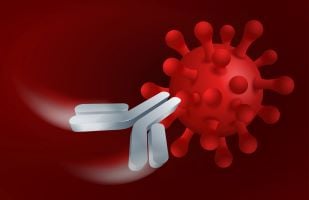Share this
infectious diseases & Covid-19: neutralizing antibodies
by Neoteryx Microsampling on Jun 7, 2021 9:00:00 AM
 A viral pandemic was something that scientists had long predicted, but when and how it would strike was not known. Scientists and researchers also did not know that it would be caused by a new type of coronavirus, the "novel" one we now know as SARS-CoV-2.
A viral pandemic was something that scientists had long predicted, but when and how it would strike was not known. Scientists and researchers also did not know that it would be caused by a new type of coronavirus, the "novel" one we now know as SARS-CoV-2.
When the first SARS virus claimed lives in 2003, it became clear to researchers that this earlier coronavirus had jumped from animals to humans. This was seen as a notable event by infectious disease experts, who knew that meant it was just a matter of time before a more contagious virus made the crossover from animals to humans.
SARS-CoV-2 appeared in humans in 2019, causing people to become infected with the illness we call COVID-19 disease. Since then, researchers have been trying to study the complex epidemiology of SARS-CoV-2, its variants, and other potentially fatal infectious diseases. A key to their investigations are serology studies, which use blood samples to detect antibodies and determine when in the disease process they develop.
One facet of these studies is to identify which antibodies will fight or "neutralize" the viral invader. They seek answers to the question: How long can these neutralizing antibodies protect us against infection, and what level of protection do they provide?
Sample Collection During Lockdown
During pandemic lockdowns, it wasn't possible for study volunteers to visit trial sites. Fortunately, researchers were able to continue their studies during this period by taking a remote research approach.
/collection-universal-home-2.jpg?width=311&height=225&name=collection-universal-home-2.jpg) This was made possible by the use of remote Neoteryx Mitra® devices and Mitra® Collection Kits from Trajan Scientific and Medical. Research groups and labs can offer their study participants these devices for easy, remote sample collection at home.
This was made possible by the use of remote Neoteryx Mitra® devices and Mitra® Collection Kits from Trajan Scientific and Medical. Research groups and labs can offer their study participants these devices for easy, remote sample collection at home.
Mitra devices are known for minimally invasive remote microsampling. The VAMS® technology behind the devices in the kits is based on a volumetric and absorptive method of microsampling. The devices are designed with a tip that easily absorbs a scientifically precise volume of blood or another bio-fluid specimen, even if the person collecting the sample is not a trained professional.
/2022%20Mitra%20Lifestyle%20Images%20(approved)/mailing-no-cold-chain-1.jpeg?width=334&height=195&name=mailing-no-cold-chain-1.jpeg) As long as people follow the enclosed instructions, or watch an online video demonstration for added guidance, the small device with the VAMS tip makes it easy to collect small samples known as "microsamples."
As long as people follow the enclosed instructions, or watch an online video demonstration for added guidance, the small device with the VAMS tip makes it easy to collect small samples known as "microsamples."
Using the pre-addressed packaging, study participants can then send their self-collected samples back to the research labs for analysis.
Key Findings of Antibody Studies
Through serology studies, researchers have gained a deeper understanding of neutralizing antibodies. They have been able to identify the specific antibodies in the body that block or “neutralize” the SARS-CoV-2 virus (the IGg group of antibodies). They also have established how long these antibodies remain in the body post-infection or post-vaccination to continue providing some protection (roughly 7-8 months).
Based on these findings, researchers are trying to establish if neutralizing antibodies can be used to develop better treatments and vaccines for protection against stronger variants of SARS-CoV-2 and related viruses in the future.
What Is a Neutralizing Antibody?
Dr. Susan Payne’s book Viruses describes neutralizing antibodies as a specific defense against viral invaders. They bind to a virus to prevent it from causing an infection by blocking interactions with the receptor. They may also attach to a viral capsid to prevent the virus from removing the coating of the genome.
Payne notes that only a small subset of many antibodies are capable of neutralization. After a person becomes infected, it can be a while before the body produces highly effective neutralizing antibodies. However, once they’re formed, these "neutralizers" continue to prevent future interactions with the virus for some time.
Hypothesis: Neutralizing Antibodies are the Key to Fighting Future Pandemics
Now that scientists have discovered that neutralizing antibodies against SARS-CoV-2 belong to the IgG class of antibodies, their goal is to use these to prevent and fight future pandemics. While studies show that these "neutralizers" seem to survive for up to 8 months after infection, the questions that researchers are still trying to answer are: how much they strengthen and protect the immune system, and whether the COVID-19 vaccines provide comparable immune responses in our bodies.
Remote specimen collection and microsampling are being used by multiple research groups pursuing answers to these questions as they also work to keep their study participants safe at home.
Learn more about microsampling for infectious disease studies here:

Image Credits: Trajan, Neoteryx, Shutterstock
Share this
- Microsampling (206)
- Research, Remote Research (119)
- Venipuncture Alternative (105)
- Clinical Trials, Clinical Research (83)
- Mitra® Device (73)
- Therapeutic Drug Monitoring, TDM (51)
- Dried Blood Spot, DBS (39)
- Biomonitoring, Health, Wellness (30)
- Infectious Disease, Vaccines, COVID-19 (24)
- Blood Microsampling, Serology (23)
- Omics, Multi-Omics (21)
- Decentralized Clinical Trial (DCT) (20)
- Specimen Collection (18)
- Toxicology, Doping, Drug/Alcohol Monitoring, PEth (17)
- Skin Microsampling, Microbiopsy (14)
- hemaPEN® Device (13)
- Preclinical Research, Animal Studies (12)
- Pharmaceuticals, Drug Development (9)
- Harpera Device (7)
- Industry News, Microsampling News (5)
- Antibodies, MAbs (3)
- Company Press Release, Product Press Release (3)
- Environmental Toxins, Exposures (1)
- July 2025 (1)
- May 2025 (1)
- April 2025 (2)
- December 2024 (2)
- November 2024 (1)
- October 2024 (3)
- September 2024 (1)
- June 2024 (1)
- May 2024 (1)
- April 2024 (4)
- March 2024 (1)
- February 2024 (2)
- January 2024 (4)
- December 2023 (3)
- November 2023 (3)
- October 2023 (3)
- September 2023 (3)
- July 2023 (3)
- June 2023 (2)
- April 2023 (2)
- March 2023 (2)
- February 2023 (2)
- January 2023 (3)
- December 2022 (2)
- November 2022 (3)
- October 2022 (4)
- September 2022 (3)
- August 2022 (5)
- July 2022 (2)
- June 2022 (2)
- May 2022 (4)
- April 2022 (3)
- March 2022 (3)
- February 2022 (4)
- January 2022 (5)
- December 2021 (3)
- November 2021 (5)
- October 2021 (3)
- September 2021 (3)
- August 2021 (4)
- July 2021 (4)
- June 2021 (4)
- May 2021 (4)
- April 2021 (3)
- March 2021 (5)
- February 2021 (4)
- January 2021 (4)
- December 2020 (3)
- November 2020 (5)
- October 2020 (4)
- September 2020 (3)
- August 2020 (3)
- July 2020 (6)
- June 2020 (4)
- May 2020 (4)
- April 2020 (3)
- March 2020 (6)
- February 2020 (3)
- January 2020 (4)
- December 2019 (5)
- November 2019 (4)
- October 2019 (2)
- September 2019 (4)
- August 2019 (4)
- July 2019 (3)
- June 2019 (7)
- May 2019 (6)
- April 2019 (5)
- March 2019 (6)
- February 2019 (5)
- January 2019 (8)
- December 2018 (3)
- November 2018 (4)
- October 2018 (7)
- September 2018 (6)
- August 2018 (5)
- July 2018 (8)
- June 2018 (6)
- May 2018 (5)
- April 2018 (6)
- March 2018 (4)
- February 2018 (6)
- January 2018 (4)
- December 2017 (2)
- November 2017 (3)
- October 2017 (2)
- September 2017 (4)
- August 2017 (2)
- July 2017 (4)
- June 2017 (5)
- May 2017 (6)
- April 2017 (6)
- March 2017 (5)
- February 2017 (4)
- January 2017 (1)
- July 2016 (3)
- May 2016 (1)
- April 2016 (2)


No Comments Yet
Let us know what you think